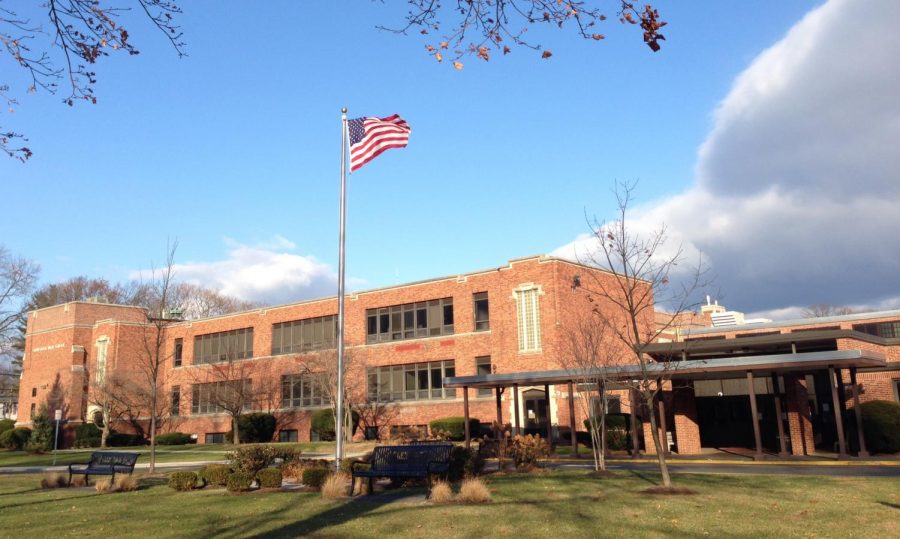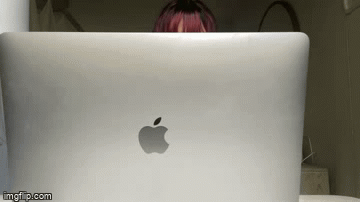Returning to school in a COVID-ridden era
High school students line up outside the Hamilton lobby before they are let in at 7:50 a.m., where every fifth person has their temperature taken. (Photo credit: Wikipedia)
October 12, 2020
The start of the school year has come and gone, but one thing still lies prominent on everyone’s mind: COVID-19. The virus that swept the country by storm in March made it seem unlikely that students and teachers would be returning back to school in the fall, but against all odds, the A and B day system, along with other safety precautions implemented by new principal Dr. Michael Parent and the district, have allowed everyone to come back.
After the 2019-2020 school year ended, the fate of the upcoming year was unknown. However, around June 26, a document issued by the Department of Education was released stating what had to happen in order for schools to be reopened safely. This document included guidance for cleaning and disinfecting not only schools, but most public spaces. More specifically, it spoke on creating a well-developed plan to maintain constant disinfection of indoor areas and general cleaning for outdoors, which would mean our courtyard, tennis courts, and various fields.
On Aug. 5, Superintendent Brett Charleston sent a letter through Schoology containing the plan and guidelines to reopen all public schools in Glen Rock. Within this letter are the safety provisions that are found in the school today, such as temperature checks for every fifth person in the morning, a mandatory three-ply facial covering, hand-sanitizer containing an alcohol base of 60% as recommended by the CDC, and separating the hallways to create a safe flow of students.
“The superintendent said here’s three things you need to do: I need a schedule of what’s going to work in your buildings, I need how the instruction is going to look, and we need to know how safe things are going to be kept,” Parent said.
The United States Environmental Protection Agency (EPA) released a list of disinfectants to protect against COVID-19, which the school was advised to closely follow. Additionally, a public health recommendations document sent out by the New Jersey Department of Health provided a regional risk matrix to help the school evaluate the different risk types for students and teachers, and how to act accordingly if someone were to get the virus.
“We don’t make just some sort of rational decision like a snow day, we have to report everything up to the county agencies and the state agencies, and they will work with our superintendent and our board president, and will give them advice: This is what you should do, this is what you shouldn’t do,” Parent said.
The job of contact tracers is important to note: if that scenario does occur, there will be careful examination of that person to determine what clubs they are in, what sports they play, who is in their classes, and anything else that may show who they were around. After this is made clear, both the family of the sick and families of who they were in contact with are alerted, along with the district. This helps to ensure that everyone is cautious of spreading COVID-19 to anyone else.
A new safety precaution decided before the year began was getting rid of the Pomptonian food services provided in the past. In previous years, students were able to bring money to buy their own school lunch. This was an easy way for students with working parents to destress about eating during their designated lunch period. Now, some students may find themselves not having food to eat, which could cause some debate throughout the school.
“I’m really busy and so is my mom, so buying lunch was very helpful,” junior Vivienne Dietrich said. “I was always ensured a meal even if I didn’t have time to make one in the morning.”
Before the school year began students were given the option to either be fully remote, or participate in the hybrid schedule, which includes A and B day designations. In June, the Department of Education gave the district three options for the year: A and B days, A.M. and P.M., or students coming in every other week.
“They basically said you have to operate somewhere around 50% capacity, or as safe as possible,” Parent said.
Parent and the rest of the district decided that the best way to keep things as normal as it could in these abnormal times was to give students the option to come in every other day, meaning they would be in person 90 days, and online the other 90. In order to get the hybrid schedule finalized, there was a six week process giving presentations to parents and staff for feedback, and eventually more than 80% of families were open to their children returning to school.
“Everyone was very skeptical,” Parent said. “The parents took a chance on us.”
There is more hope for the future of the school year as there have been no reported cases amongst students and staff so far. The measures enforced by the district have been respected and followed without deliberation, so it can be agreed that the most essential concern for everyone right now is safety.
“As long as in this building we are all doing the simple thing of just wearing a mask and washing our hands, I think we’re way more than halfway to beating this thing,” Parent concludes.




